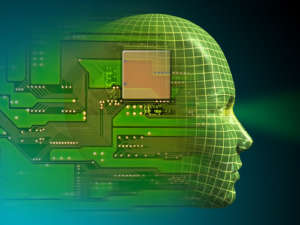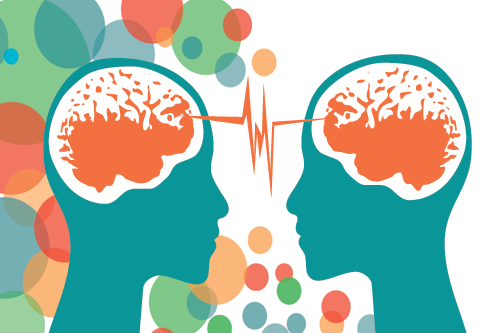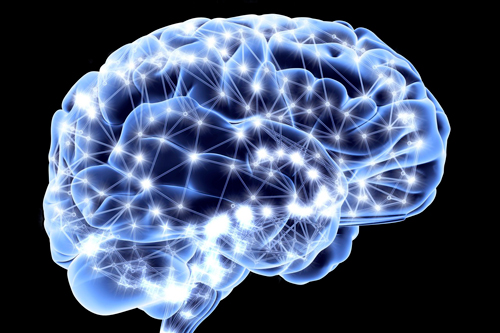You most likely know people who claim to have predicted a future event or experienced a connection with a departed loved one. Scientists dislike such claims because they’re impossible to prove—but not for lack of trying. Scores of scientific investigations have been conducted in parapsychology—the study of phenomena such as psychokinesis (using the mind to move objects), telepathy (mind reading), and remote viewing (the ability to perceive things out of range of the five senses).
Psychokinesis: Look Ma, No Hands!
There have been many demonstrations of people claiming to move objects with their minds, but usually these displays turn out to be nothing more than magic tricks. While it’s true that people can be trained to make things move through brainpower, they need a lot of high-tech assistance to succeed—including computers to translate the neuronal synapses of thoughts into signals and external devices with sophisticated sensory equipment to receive those signals. A major challenge remains: The amount of energy we can currently harness from synapses couldn’t budge a poppy seed. Perhaps one day we’ll learn how to bring together millions of synapses into one focused beam, similar to the way a laser turns benign light into a powerful ray that can cut through a diamond.
Mind Reading: The Social Media of the Future

If we can translate mental commands into signals understood by machines, perhaps we could do the same for signals sent from one mind to another. Neuroscientist Trisha Stafford, Ph.D., of the University of Technology in Sydney, Australia, appears to have found that our brains may be equipped to perceive someone else’s thoughts.
In her study, electrodes were attached to the skulls of volunteers to measure brain wave activity in four areas. She found that two people seemed to make a genuine connection when their brain wave patterns were similar. During this connection, both people also had heightened activity in the parietal lobe—an area of the brain thought to be responsible for imagination.
“This sixth sense isn’t something that is magical,” says psychotherapist Alan Meara, who supervised the research. “It is something that the human brain is wired to do. The research shows that we have the capacity to understand people at a deeper level than we normally do in general conversation.”
On a summer day in 2001, my own skeptical mind was opened to the possibilities of mental telepathy. I was stepping up to the street from the subway in New York City when I became so overwhelmed by anxiety that I had to grab a lamppost to keep my balance. As I arrived at my office, the phone rang. It was my sister, calling to tell me that our mother in Arizona had just suffered a severe stroke. Had I picked up some powerful distress signal from my mother, or was it just a coincidence?
Remote Viewing: The Mysterious Art of Dowsing
Elizabeth Mayer, a prominent psychoanalyst and professor at the University of California, Berkeley, was a true skeptic when it came to parapsychology. But her mind was opened by a startling experience of her own. In Extraordinary Knowing: Science, Skepticism, and the Inexplicable Powers of the Human Mind, Mayer recounts how her daughter’s stolen harp, a valuable, hand-carved instrument, was located in a neighboring town by a dowser—someone who specializes in finding lost objects. The dowser pinpointed its location over the phone from his home in Fayetteville, Arkansas, nearly 2,000 miles away.
One factor that may eventually give credibility to remote viewing, as well as psychokinesis, is the ability to “read” the earth’s magnetic fields. This perception allows animals to stay on target during long migrations thanks to cryptochrome, a protein that enables geomagnetically sensitive biochemical reactions in their eyes.
 Humans appear to have a similar protein in their retinas that may serve as a travel aid. In an experiment conducted by neurobiologist Stephen Reppert of the University of Massachusetts Medical School, cryptochrome in fruit flies’ eyes was replaced by the human version. This protein enabled the insects to alter their flight patterns in response to changes in a controlled electromagnetic field, just as their natural cryptochrome would have done. “It is thought to be very important for how animals migrate,” Dr. Reppert says about cryptochrome. “Perhaps this protein is also fulfilling an important function for sensing magnetic fields in humans.”
Humans appear to have a similar protein in their retinas that may serve as a travel aid. In an experiment conducted by neurobiologist Stephen Reppert of the University of Massachusetts Medical School, cryptochrome in fruit flies’ eyes was replaced by the human version. This protein enabled the insects to alter their flight patterns in response to changes in a controlled electromagnetic field, just as their natural cryptochrome would have done. “It is thought to be very important for how animals migrate,” Dr. Reppert says about cryptochrome. “Perhaps this protein is also fulfilling an important function for sensing magnetic fields in humans.”
If humans can learn to alter their own electromagnetic fields, perhaps it would be possible to direct magnetic energy toward an object that would react to it. If we can do that, who knows what other types of energy we may one day tap into. Perhaps we’ll discover that we possess a form of radar with the potential to detect distant objects, harps and otherwise.
Are Some Brains Structured to Believe the “Unbelievable”?

If our brains can’t do the impossible on their own, perhaps one day they’ll be helped to do so. Lab rats have already taken this step: They’ve been fitted with implants that allow them to see previously undetectable infrared light. The possibility of equipping humans with sensors for doing everything from locating the North Pole to sensing a change in mood of someone nearby no longer seems far-fetched. Maybe we’ll even be able to retrofit ourselves with mind-reading software.
Research shows that differences in brain activity may affect whether we accept parapsychological phenomena. A study by Finnish scientists compared brain activation patterns in supernatural believers vs. skeptics who were shown statements depicting troubling life situations next to an image. (Example: “A loved one has been arrested for drunk driving and you are afraid s/he will get a prison sentence” next to a picture of a brick wall.) Then they were asked if they saw any “signs” in the images about how things would turn out. Those in the supernatural group were twice as likely as the skeptics to see signs of future events when looking at the images. MRIs revealed that the right inferior frontal gyrus—an area of the brain associated with cognitive inhibition—was activated more strongly in the skeptics when viewing the images. Other research has shown that people who believe in the supernatural are more likely to see images as symbols that indicate what’s going to happen, while skeptics will see these images as nothing more than metaphors.
Lack of inhibition, however, does not explain findings that appear to confirm precognition (knowledge of an event before it occurs). This phenomenon has been demonstrated in well-controlled studies in which subjects were shown a mix of provocative and neutral images in a random sequence. Anxious reactions (as measured by elevation of fingertip pulse and skin resistance) were experienced by many viewers before the provocative images were presented but not before the presentation of neutral images.
So the next time you get a “gut feeling” about something, you might want to take it seriously. You may be in the process of predicting the future.
Related Reading
- Mental Wi-Fi: The Advancing Technology of Brain-Controlled Devices
- Acupuncture Made Me One with the Universe
- Indie Spiritualist: A No Bullshit Exploration of Spirituality
- Rewired by Faith: Does the God Gene Exist?
Post Disclaimer
This content is for informational purposes only and does not constitute medical advice. Please consult a healthcare professional for any medical concerns.




1 Comment
Tara Green
Much to think about here…and what a terrific illustration!